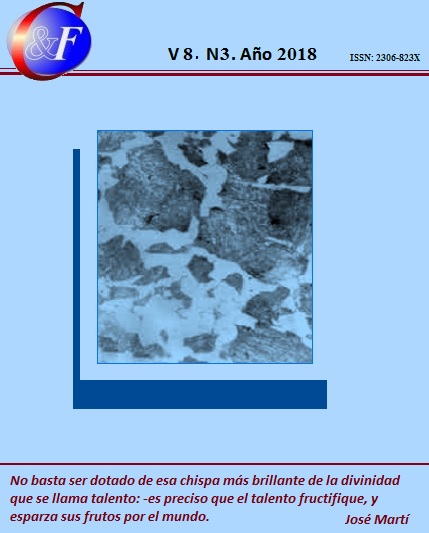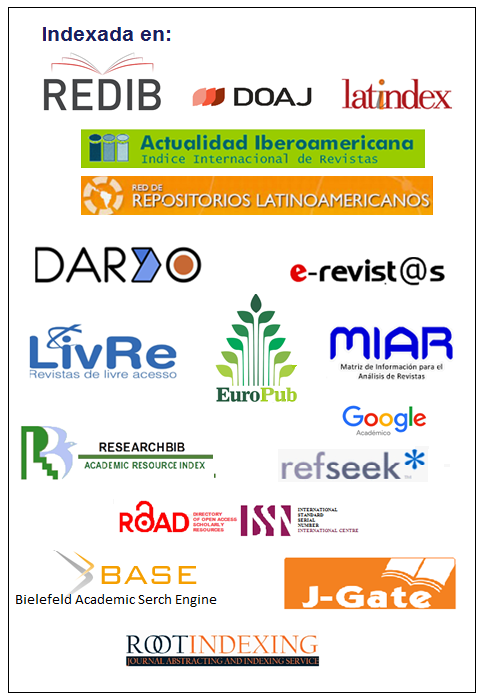Cognitive brain benefits of dance practice
Keywords:
dance, brain, cognitive functions, neuropsychology, psychology.Abstract
Human beings are social beings and we have behaviors that are ritual in nature. Dance is a present element almost in all societies and despite being as old as the human being, the research with respect to it has been given recently. Psychology and neuroscience have approached the subject of dance as a physical exercise, as rehabilitation therapy and describing the neurobiological mechanisms that underlie it. Dance is a cultural element present in all countries of the world, the research done so far indicates that practicing dance can have benefits at the brain level and can be used as support for intervention in different areas of psychology, however it is important to know which are the cognitive processes benefited with dance. The objective is to evaluate with cognitive screening in professional dancers. It was found that some cognitive functions of the dancers are at a high normal level, this is supported by the evidences that indicate the cerebral benefits of the dance and its possible application for intervention in patientsDownloads
References
ARDILA, A. & ROSSELLI, M. 2007. Neuropsicología clínica. El Manual Moderno, México, D.F.
BACHRACH, A.; JOLA, C. & PALLIER, C. 2016. Neuronal bases of structural coherence in contemporary dance observation. Neuroimage 124: 464-472.
BALMASEDA, A. B. L. 2010. La bailoterapia, una opción saludable y divertida para elevar la calidad de vida de las personas de cualquier edad. PODIUM-Revista de Ciencia y Tecnología en la Cultura Física 5(2): 165-175.
BEGOÑA, L. A. 2010. Beneficios de la práctica del baile flamenco en la vejez. Revista del centro de investigacion Flamenco Telethusa 3(3): 32-35.
BRÄUNINGER, I. 2012. Dance movement therapy group
intervention in stress treatment: A randomized controlled trial (RCT). The arts in psychoterapy 39(5): 443-450.
BROWN, S. & MARTINEZ, M. 2006. The neural basis of human dance. Cerebral Cortex 16(8): 1157-1167.
CALVO-MERINO, B.; GREZES, J.; GLASER, D.; PASSINGHAM, R. & HAGGARD, P. 2006. Seen or Doing? Inflience of visual and motor familiarity in action observation. Current Biology 16(19): 1905-1910.
CHRISTENSEN, J.; POLLICK, F.; LAMBRECHTS, A. & GOMILA, A. 2016. Affective responses to dance. Acta psychologica 168: 91-105.
DHAMI, P.; MORENO, S. & DESOUZA, J. 2015. New framework for rehabilitatin fusion of cognitive and physical rehabilitation: the hope form dancing. Frontiers in Psychology 5: 1-15.
ENGHAUSER, R. 2003. Motor Learning and the Dance Technique Class: Science, Tradition, and Pedagogy. Journal of dance Education 3(3): 87-95.
ESCOBAR, A. & GÓMEZ, B. 2006. Creatividad y función cerebral.
Revista Mexicana de Neurociencias 7(5): 391-399.
FERNÁNDEZ-ARGÜELLES, E. L.; RODRÍGUEZ-MANSILLA, J.; ANTUNEZ, L. E.; GARRIDO-ARDILA, E. M. & MUÑOZ, R. P. 2015. Effects of dancing on the risk of falling related factors of healthy older adults: A systematic review. Archives of Gerontology and Geriatrics 60(1): 1-8.
GIACOSA, C.; KARPATI, F.; FOSTER, N.; PENHUNE, V. & HYDE, K. 2016. Dance and music training have different effects on withe matter diffusivity in sensoriomotor pathways. NeuroImage 135: 273-286.
GROSBRAS, M. H.; TAN, H. & POLLICK, F. 2012. Dance and emotion in posterior parietal cortex: A low-frequency rTMS study. Brain Stimulation 5: 130-136.
GUZMÁN, A.; FREESTON, M.; ROCHESTER, L.; HUGHES, L. & JAMES, I. 2016. Psychomotor dance therapy intervention (DANCIN) for people with dementia in care homes: a multiple-basline single-case study. International Psychogeriatrics 28(10): 1695-1715.
HO, R. T.; FONG, T. C.; CHEUNG, I. K.; YIP, P. S. & LUK, M. Y. 2016. Effects of a short-term dance movement therapy program on symptoms and stress in patients with breast cancer undergoing radiotherapy: A randomized, controlled, single-blind trial. Journal of Pain and Symptom Management 51(5): 824-833.
KARPATI, F.; GIACOSA, C.; FOSTER, N.; PENHUNE, V. & HYDE, K. 2015. Dance and the brain: a review. Annals of the New York Academy of Sciences 1337(1): 140-146.
KATTENSTROTH, J.; KOLANKWSKA, I.; KALISCH, T. & DINSE, H. 2010. Superior sensory, motor, and cognitive performance in elderly individuals with multi-year dancing activities. Frontiers in Aging Neuroscience 2: 31.
KIM, S.; KIM, M.; AHN, Y.; LIM, H.; KANG, S.; CHO, J.; ... & SONG, S. W. 2011. Effect of dance exercise on cognitive function in elderly patients with metabolic syndrome: A pilot Study. Journal of Sports Science and Medicine 10(4): 671-678.
KIMURA, K. & HOZUMI, N. 2012. Investigating the acute effect of an aerobic dance exercise program on neuro-cognitive function in the elderly. Psychology of Sport and Exercise 13(5): 623-629.
KOCH, S. C.; MORLINGHAUS, K. & FUCHS, T. 2007. The joy dance Specific effect of a single dance intervention on psychiaric patients with depression. The arts in Psychoterapy 34(4): 340-349.
KOCH, S.; KUNZ, T.; LYKUO, S. & CRUZ, R. 2014. Effects of dance movement therapy and dance on healt-related psycological outcomes: A meta-analysis. The arts in Psychoterapy 41(1): 46-64.
LAKES, K.; MARVIN, S.; ROWLEY, J.; SAN NICOLAS, M., ARASTOO, S.; VIRAY, L.; ... & JURNAK, F. 2016. Dancer parceptions of the cognitive, social, emotional and physical benefit of modern styles of patnered dancing. Complementary Therapies in Medicine 26: 117-122.
LALAND, K.; WILKINS, C. & CLAYTON, N. 2016. The evolution of dance. Current Biology 26(1): 5-9.
MALA, A.; KARKOU, V. & MEEKUMS, B. 2012. Dance/Movement Therapy (D/MT) for depression: A scoping review. The arts in Psychoterapy 39(4): 287-295.
MARQUEZ, D.; WILBURG, J.; HUGHES, S.; BERBAUM, M.; WILSON, R.; BUCHNER, D. & MCAULEY, E. 2014. B.A.I.L.A- A latin dance randomized controlled trial for older Spanish-Speaking Latinos: Rationale, desing and methods. Contemporary Clinical Trials 38(2): 397-408.
MARTIN, M. 2014. Moving on the spectrum: Dance/movement therapy as a potential early intervention tool for children with Autism Spectrum Disorders. The arts in Psychoterapy 41(5): 545-553.
MCGILL, A.; HOUSTON, S. & LEE, R. 2014. Dance for Parkinson's: A new framework for research on its physical, mental, emotional and social benefits. Complementary Therapies in Medicine 22(3): 426-432.
MCNEELY, M.; DUNCAN, R. & EARHART, G. 2015. Impacts of dance on non-motor symptoms, participation and quality of life in Parkinson disease and healthy older adults. Maturitas 82(4): 336-341.
MEROM, D.; GRUNSEIT, A.; ERAMUDUGOLLA, R.; JEFFERIS, B.; MCNEILL, J. & ANSTEY, K. 2016. Cognitive benefits of social dancing and walking in old age: the dancing mind randomized controlled trial. Frontiers in Aging Neuroscience 8: 1-11.
MUNZERT, J.; ZENTGRAF, K.; STARK, R. & VAITL, D. 2008. Neural Activation in cognitive motor processes: comparing motor imagery and observation of gymnastic movements. Experimental Brain Research 188(3): 437-444.
STEVENS-RATCHFORD, R. 2016. Ballroom Dance: Linking Serious Leisure to Successful Aging. The International Journal of Aging and Human Development 83(3): 290-308.
THOMSON, P. 2011. Dance and creativity. In: M. A. RUNCO & S. R. PRITZKER (Eds.). Encyclopedia of Creativity. 2nd ed. Vol. 1. Academic Press, New York, p. 343–350.
Published
How to Cite
Issue
Section
Esta obra está bajo una Licencia Creative Commons Reconocimiento-NoComercial 4.0 Internacional
La Revista Ciencia & Futuro es una revista de acceso abierto, todo el contenido está disponible gratuitamente sin cargo para el usuario o su institución. Los usuarios pueden leer, descargar, copiar, distribuir, imprimir, buscar o vincular los textos completos de los artículos, o utilizarlos para cualquier otro fin lícito, sin pedir permiso previo al editor o al autor. Todo lo anterior, de acuerdo con la definición de BOAI de acceso abierto.
Los autores que publican en esta revista están de acuerdo con los siguientes términos: Licencia Creative Commons Atribución-NoComercial permite que el beneficiario de la licencia tenga el derecho de copiar, distribuir, exhibir y representar la obra y hacer obras derivadas para fines no comerciales siempre y cuando reconozca y cite la obra de la forma especificada por el autor o el licenciante. Los autores pueden establecer por separado acuerdos adicionales para la distribución no exclusiva de la versión de la obra publicada en la revista (por ejemplo, situarlo en un repositorio institucional o publicarlo en un libro), con un reconocimiento de su publicación inicial en esta revista. Se permite y se anima a los autores a difundir sus trabajos electrónicamente (por ejemplo, en repositorios institucionales o en su propio sitio web) antes y durante el proceso de envío, ya que puede dar lugar a intercambios productivos, así como a una citación más temprana y mayor de los trabajos publicados (Véase The Effect of Open Access) (en inglés). Lo anterior debe realizarse siempre sobre el artículo ya publicado por Ciencia & Futuro.
Los autores mantienen el control sobre la integridad de sus trabajos y el derecho a ser adecuadamente reconocidos y citados.
A los editores se les otorgan derechos no exclusivos para publicar y distribuir.




